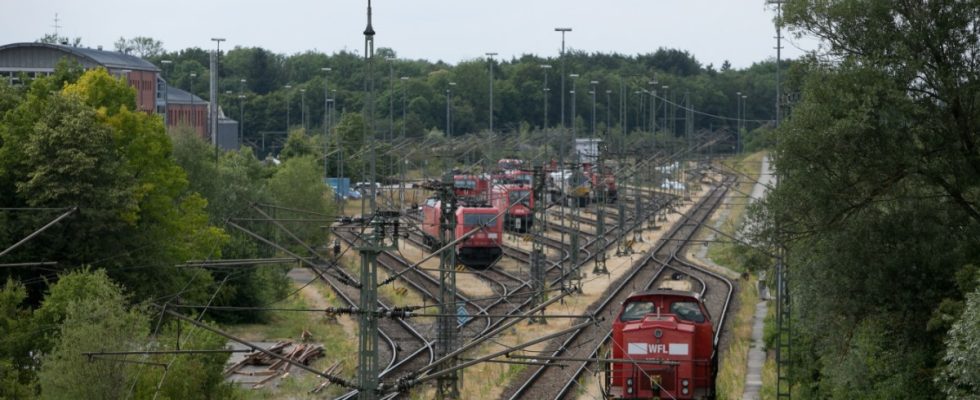Deutsche Bahn (DB) wants to put more goods on the rails and therefore expand capacities. The aim is to increase rail’s share of all freight transport from 18 to 25 percent by 2030.
On Tuesday, the Bavarian railway manager Klaus-Dieter Josel presented the first plans for a new terminal for combined transport (CT) at the Munich North marshalling yard. Also present: Bavaria’s Transport Minister Christian Bernreiter (CSU).
At a combined transport terminal, goods are reloaded between road and rail. The idea of combined transport: Goods should be transported by rail (or water) in a climate-friendly, efficient and safe manner over as long a route as possible, while the time spent on the road should be as short as possible. Trucks only bring the load within a radius of around 50 kilometers to a transshipment station or pick it up from there.
There is already a CT terminal in Munich-Riem. Up to 350,000 so-called loading units, i.e. containers or truck semi-trailers, can be handled there every year. But Riem has reached the limits of its capacity, in the north of the city, on Ludwigsfelder Straße, there is still space. In the future, up to 300,000 loading units will be handled here every year. According to DB, the expansion of freight transport by rail should save 75 million truck kilometers and around 56 tons of CO2 per year.
Together with the existing combined transport terminal in Riem, the capacity in the Munich area will almost double in the future. “For more freight traffic on the environmentally friendly rail, we have to efficiently interlink the modes of transport,” says Josel. The new terminal creates the necessary conditions for this.
The new terminal is to be built on an area of around 180,000 square meters on the railway site where the marshalling yard has been located since the 1990s. It is to have four transshipment tracks including truck unloading lanes. In the future, loading will take place with six gantry cranes, which will be controlled by remote control from the company building.
According to project manager Andreas Witzel, it is not yet clear how the entrances and exits will be designed. Because DB has just started the preliminary planning, which should last until 2024. After further planning phases and the planning approval process, the schedule envisages the start of construction in 2028 and commissioning in 2031. Public participation is now also being launched, for example to address concerns about noise and additional traffic, says Witzel.
DB believes that the location is very well suited. It is located directly on the so-called Scan-Med-Corridor, the rail corridor between Scandinavia and the Mediterranean. In addition, the site has good transport links due to its proximity to the A99 motorway and already belongs to DB. This should keep the use of land and additional noise emissions for residents within limits.
According to Josel, the terminal is an important building block for the traffic turnaround in the Alpine region. Before a new rail connection towards Italy can be used on Bavarian soil with the northern access to the Brenner Pass, probably at the end of the 2030s, the capacity on the route to Kufstein will be increased by around 20 percent with the modern ECTS train control system.
Bernreiter said he was pleased with the project and the choice of location in the north of Munich. As Minister of State, he is not responsible for such things. However, he took the opportunity to demand more money from the federal government for the rail expansion. He has now made it a habit to do this at such appointments during the state election campaign.

